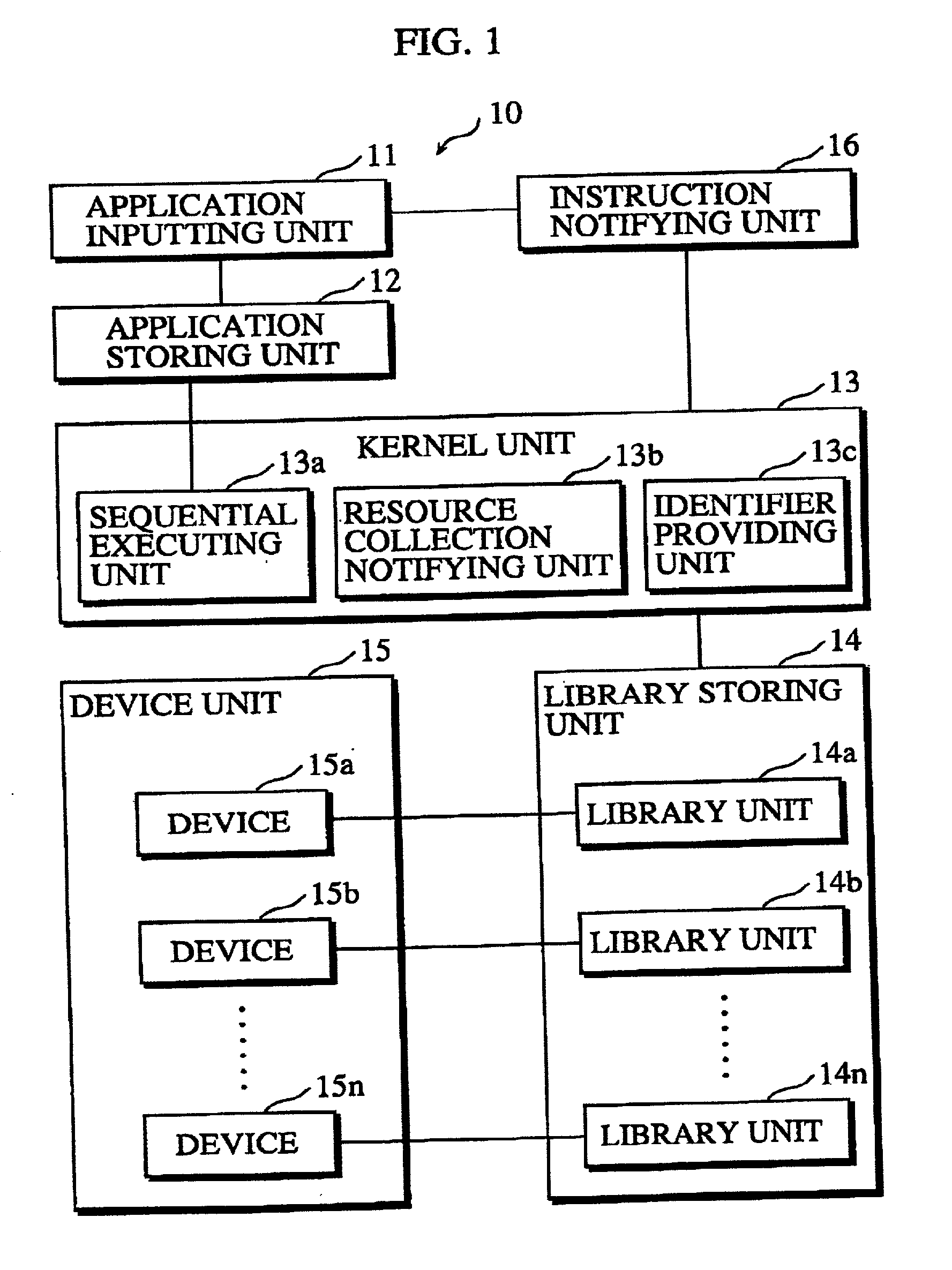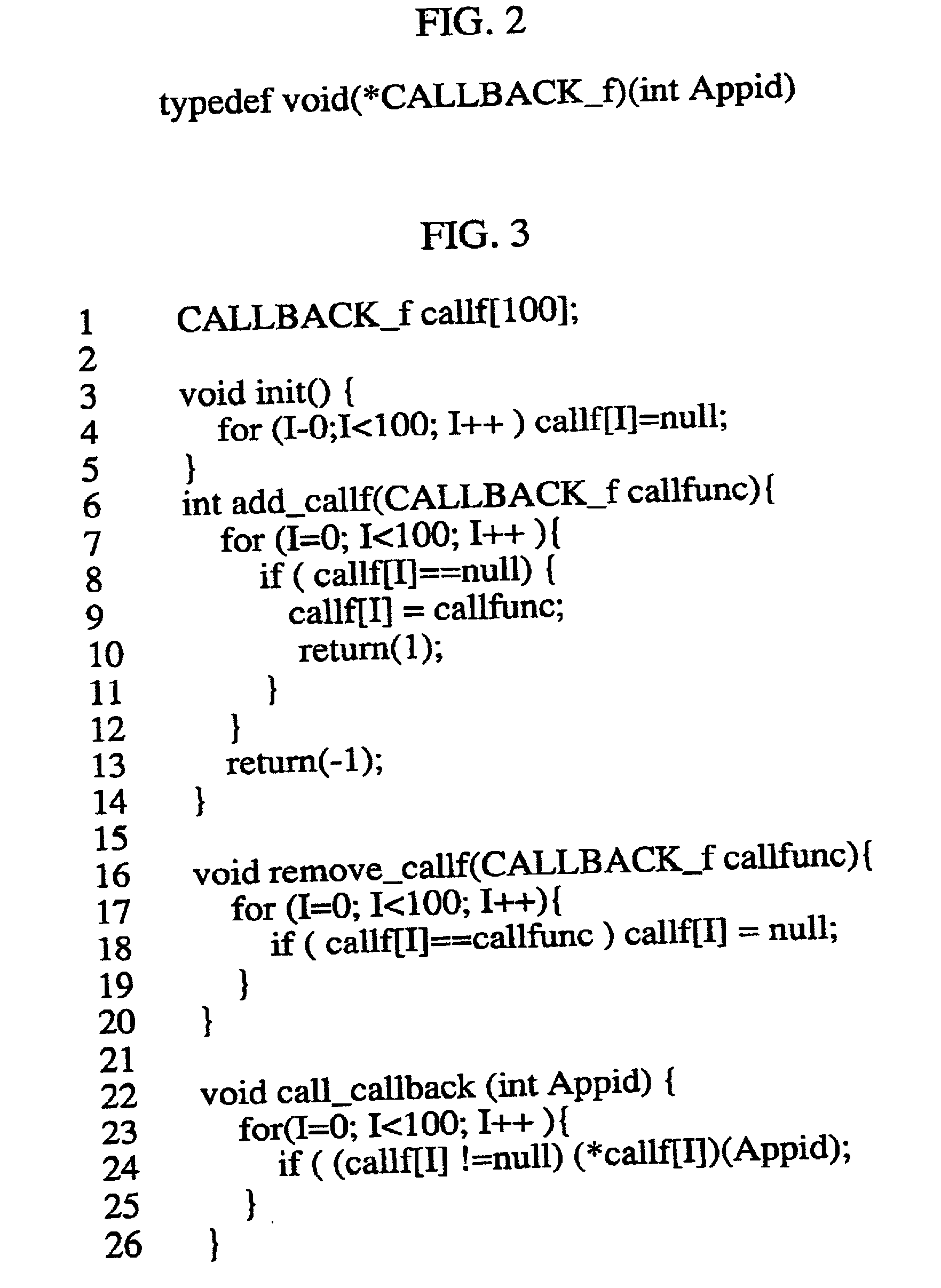Application execution apparatus and method
a technology of application execution and memory area, applied in the direction of multi-programming arrangements, instruments, program control, etc., can solve the problems of significant burden of garbage collection in memory area, inability to execute the next application, etc., and achieve the effect of reducing the burden of garbage collection and executing more quickly
- Summary
- Abstract
- Description
- Claims
- Application Information
AI Technical Summary
Benefits of technology
Problems solved by technology
Method used
Image
Examples
first embodiment
[0078] First Embodiment
[0079] In an application execution apparatus of the first embodiment of the invention, each time an application is completed or the like, not a kernel unit but library units collect resources provided to the application.
[0080] Here, "application" denotes either a program or a function realized by executing the program. Also, "resource" denotes a tuner, an MPEG audio decoder, an MPEG video decoder, a keyboard input device, a remote control input device, a mouse input device, a trackball input device, a mutex, a semaphore, a network device, a serial device, an IEEE1394 (Institute of Electrical and Electronics Engineers 1394) interface, an USB (Universal Serial Bus) device interface, a file system, a display device, a memory, a modem, or the like. The library units are a group of device drivers that control (reserve, manage, collect) resources in accordance with a request from an application.
[0081] More specifically, when an application requests provision of a re...
second embodiment
[0107] Second Embodiment
[0108] In the first embodiment, each library unit registers a callback function which is to be called when an application is completed or suspended. In the second embodiment, each library unit generates a resource collection instance which is analogous to the callback function in the first embodiment, and collects a resource provided to an application when the application is completed or suspended. A resource collection instance referred to here is a program which is generated from a class (a Java bytecode program) stored in each library unit, and which includes certain information and a method that is a function for retrieving the certain information. That is to say, the resource collection instance holds information about an application which has requested provision of a resource, information about the provided resource, and a method for retrieving these information. These information can be retrieved by calling the method of the class.
[0109] An application...
third embodiment
[0125] Third Embodiment
[0126] An application execution apparatus of the third embodiment generates threads for each application, and reserves resources required by the application using the generated threads. Whenever an application is completed, an OS unit collects unwanted resources provided to the application based on a task associated with the generated threads. In this way, it is possible to execute the next application without ending the Java middleware (virtual machine). A thread mentioned here is a context (a series of steps) that sequentially executes program codes of an application. A Java application may generate a plurality of threads, which each enable program codes of the application to be executed in parallel. In this embodiment, a task is a set of threads for executing an application, and resources allocated to the application are managed in correspondence with the task.
[0127] The application execution apparatus of this embodiment is described in greater details belo...
PUM
 Login to View More
Login to View More Abstract
Description
Claims
Application Information
 Login to View More
Login to View More - R&D
- Intellectual Property
- Life Sciences
- Materials
- Tech Scout
- Unparalleled Data Quality
- Higher Quality Content
- 60% Fewer Hallucinations
Browse by: Latest US Patents, China's latest patents, Technical Efficacy Thesaurus, Application Domain, Technology Topic, Popular Technical Reports.
© 2025 PatSnap. All rights reserved.Legal|Privacy policy|Modern Slavery Act Transparency Statement|Sitemap|About US| Contact US: help@patsnap.com



